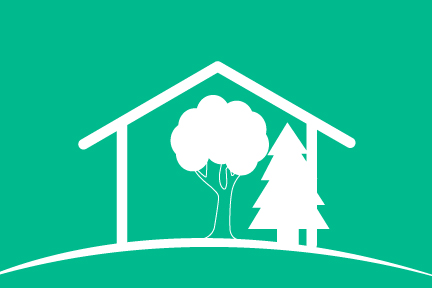That Tree is a Nuisance – What Can I Do?

Common Situations
Situation 1: If a neighbor’s tree branches or roots are causing damage to your property, such as lifting a sidewalk, damaging a retaining wall, or harming a structure on your property and the neighbor refuses to take action to remedy the situation, you may be able to have the tree declared a nuisance and obtain a court order for the tree to be removed. Rules vary by state as to whether you can sue your neighbor for the damage caused by their tree. In some states, if the invading roots or branches caused serious harm, such as structural damage to your property, or if serious harm will be caused if no action is taken, you can demand that the neighbor fix the issue and if he/she won’t, you may be able to file suit.
Situation 2: If your neighbor’s tree is dropping leaves, branches, pods, pinecones, or acorns onto your property, the neighbor has no legal responsibility, even if the debris creates additional work for you or clogs ponds, gutters, drains, etc. This type of debris is considered a “natural product” of the tree and is the responsibility of the property owner whose land it falls on.
Situation 3: If a neighbor plants a tree that blocks the sun to your yard or blocks your view of the scenery, you are probably out of luck. Generally, your neighbor has the right to plant or remove trees on their own property at any time, and for any reason, regardless of the effect on your property. In most cases, you have no recourse against a neighbor who plants a new tree on their property which blocks your view or shades a portion of your yard that you prefer to get natural sunlight. There may be local exceptions to these rules if your city or municipality has a local view ordinance, but these ordinances are rare and may be difficult or expensive to pursue in court. Similarly, if your neighbor removes a tree that provided desired shade to your yard, you have no legal remedy.
Situation 4: What about trees that grow along the street – are they your responsibility or the responsibility of your town or city? Ownership and responsibility for maintenance of trees that grow along streets depend on local or municipal laws which vary depending upon where your property is located. The answer may also depend on whether the tree was planted privately or planted by the municipality.
In some areas, the municipality maintains control of a certain portion of property close to the street, including any trees planted in that area. In that case, the municipality would be responsible for maintaining the tree and removing it, if necessary. If the tree was causing damage to your property or if you wanted the tree removed, you would have to contact the municipality to remove it, and penalties might be imposed if you undertake trimming or removal on your own. Under those circumstances, your best bet is to inform the municipality in writing and request that they take action. Provide documentation and photographs of the damage.
In some municipalities, the closest property owner is required to maintain trees along the roadway. That might mean that you would be required to do the maintenance or removal yourself or to pay the costs for trimming or removal. But be careful – even if you are paying for maintenance, the municipality still might require you to obtain permits or permission before you can take action. In some cases, even if a tree along the street is planted privately, the municipality will require a permit before trimming or removal work can be performed.
Conclusion
Trees are beautiful and essential to our existence but can cause headaches too. Above is a good recap of common situations with neighboring trees. For more detailed issues or immediate concerns, contact an attorney for advice on how to handle the situation. You can post a short summary of your issue on site, and let attorneys to come to you!
Also, to find out how to determine who owns a tree and learn about your legal rights when a neighbor’s tree branches or roots invade your property, or when a neighbor’s tree falls on your property, see our post, Tree Branches and Fallen Trees: Who’s Responsible?
Do You Need An Attorney?
If so, post a short summary of your legal needs to our site and let attorneys submit applications to fulfill those needs. No time wasted, no hassle, no confusion, no cost.

